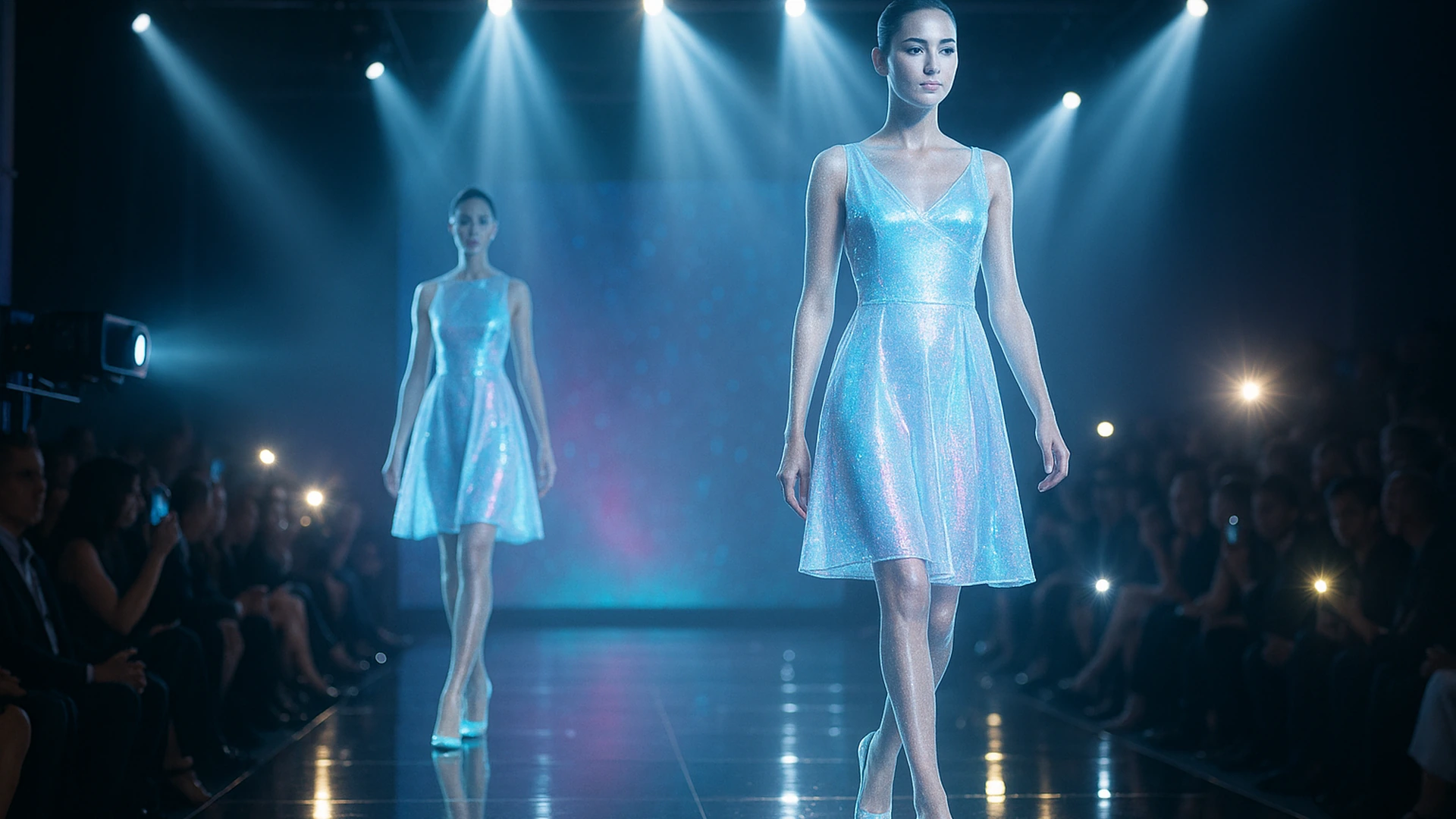Holograms on the Runway: How Fashion’s Future is Breaking the Fourth Wall

Fashion has always been about the moment. A dazzling runway show, a flash of cameras, a handful of influential eyes taking it all in. But what if that moment didn’t have to end? What if a fashion show could continue long after the lights go down, and even appear in multiple cities at once?
Thanks to holographic display technology, fashion is stepping into its most immersive era yet. From couture catwalks to flagship storefronts, holograms are turning once-exclusive experiences into global showcases.
From Ephemeral to Enduring
A traditional runway show lasts between 8 to 20 minutes. It might cost a brand $500,000 to $1 million or more to produce, not including travel, logistics, lighting, and talent, according to Business of Fashion. For most, it’s over in a blink. The footage is clipped into social posts, the garments are packed up, and the moment is gone.
But by filming the runway in high-definition 3D and displaying it on Miirage’s transparent holographic screens, that fleeting moment becomes repeatable. The show can loop in a flagship store. It can appear simultaneously in London, Seoul, New York, and Dubai. The audience is no longer limited to the people who made it into the venue.
Fashion Without Borders
Fashion must now perform beyond the catwalk. Holograms allow luxury brands to scale their storytelling while maintaining the aura of exclusivity.
A pop-up in Mexico City can feature a holographic version of Paris Fashion Week. A luxury mall in Singapore can replay highlights from Milan. A department store in Berlin can host a fashion moment that originally premiered in New York.
- Expanded access = more exposure
- Global synchronization = higher impact
- Looped storytelling = longer dwell time
- Repeatable content = better ROI
In-Store Fashion: Where Physical and Digital Collide
Fashion still lives in the physical world. Shoppers want to touch fabrics, try on sizes, and feel the weight of a handbag in their hands. That’s not changing anytime soon.
But holograms enhance the in-store experience without replacing it. They add motion, emotion, and story, right next to the product itself.
Picture this:
- In Louis Vuitton, a holographic model shows the bag you’re holding, styled with a full look from the current collection.
- In Gucci, a celebrity ambassador appears in 3D wearing the very dress on the mannequin beside you.
- At Prada, an archived runway moment loops beside the latest capsule collection.
- In Selfridges or Galeries Lafayette, a rotating holographic display plays runway highlights, drawing passersby through the door.
According to POPAI, visual displays in retail environments can increase sales by 20 to 60 percent, depending on placement and execution. Holograms, with their ability to surprise and captivate, outperform traditional displays by offering both novelty and emotional connection.
Fashion’s Phygital Future
We’re in the middle of a shift. Fashion is no longer just about what you wear; it’s about how you experience it. The term “phygital” captures this blend of physical and digital, where a store visit is enhanced by motion graphics, holograms, sound, and light.
A 2024 McKinsey report found that 47% of fashion executives plan to increase investment in immersive in-store tech over the next three years.
With Miirage’s modular holographic displays, stores can:
- Launch new collections with zero logistics
- Feature multiple models without the staffing
- Create 24/7 storytelling without any wear and tear
- Install exclusive celebrity moments or collaborations
- Trigger purchases by showing outfits in motion
Sustainability and Scalability
Fashion is also confronting its environmental footprint. The current model, flying teams to shows, creating physical samples, building sets—is resource-intensive. Holography presents a more sustainable alternative.
By capturing once and displaying many times, brands reduce:
- Travel emissions
- Sample waste
- Venue duplication
Fashion thrives on exclusivity, but in a digital world, exclusivity must also be immersive. Holograms give brands a tool to elevate physical spaces, extend events, and engage new audiences without losing their signature allure.
The next big fashion moment might not be a show in Paris. It might be a hologram on Bond Street, Fifth Avenue, or Orchard Road. And it won’t just last 12 minutes. It will last as long as the story needs to be told.